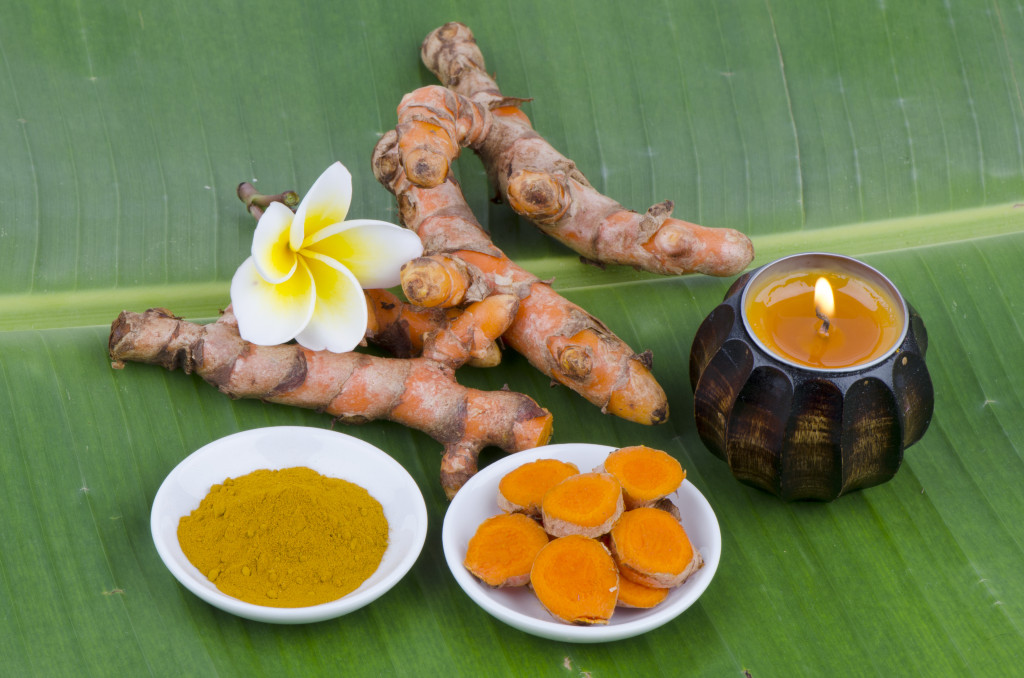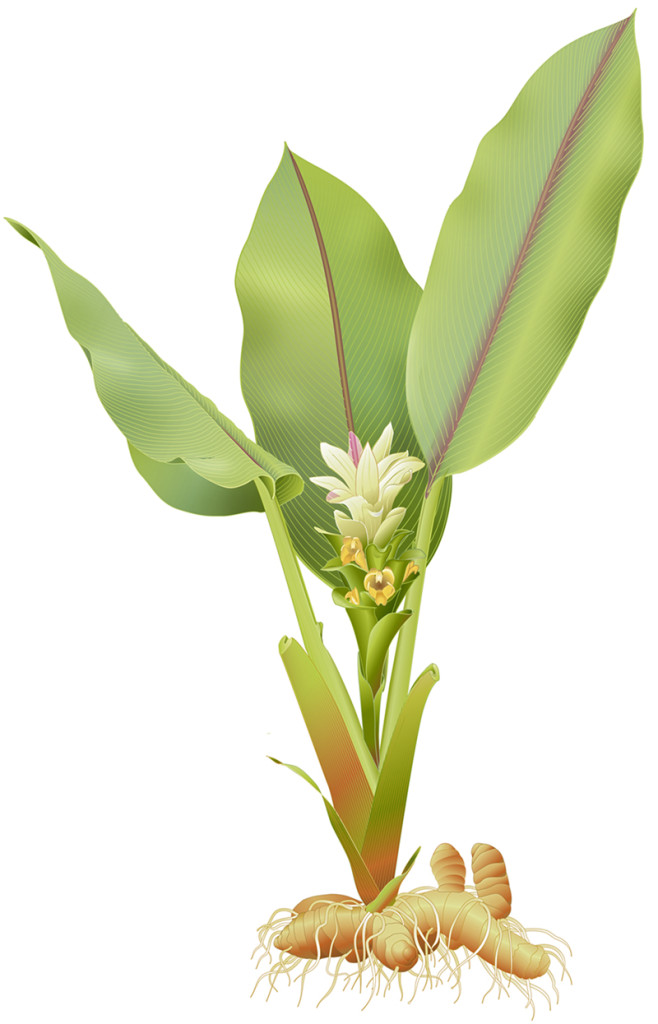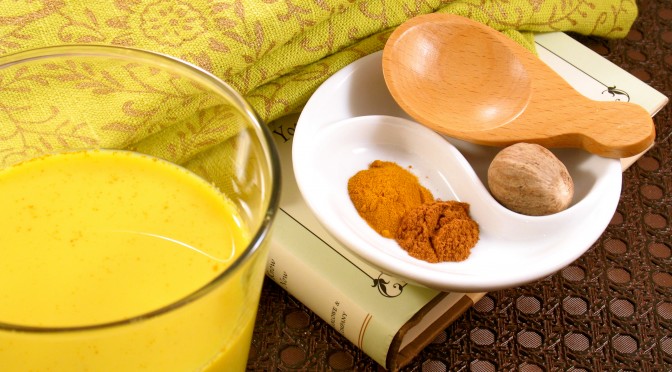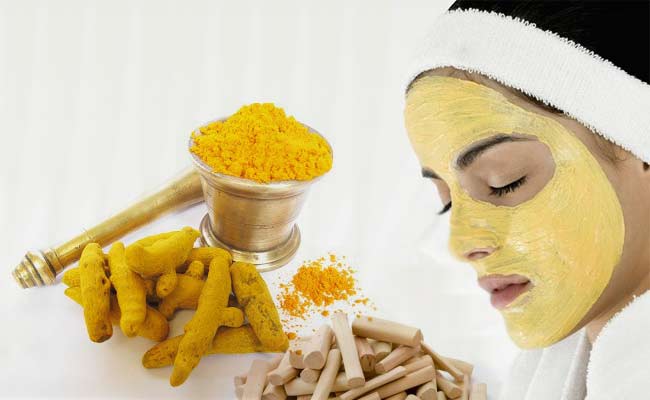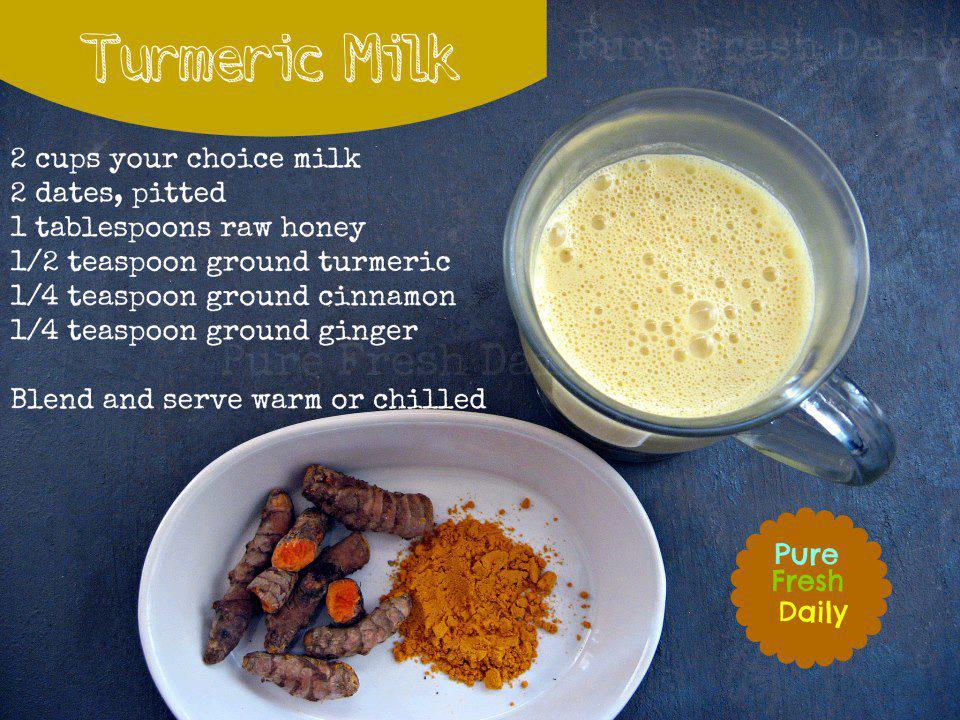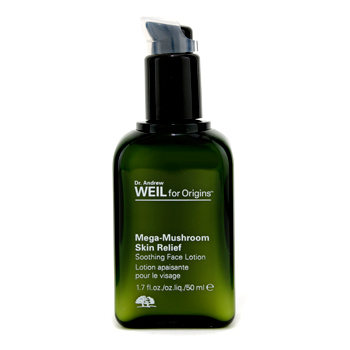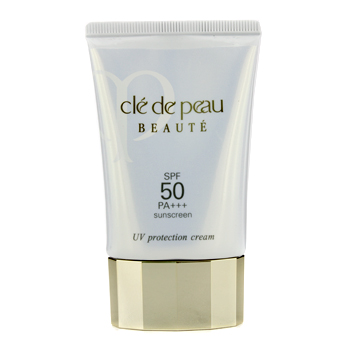The Ageless Qualities Of Turmeric
This week our contributor is Anna Rummel Tenenbaum.
Turmeric
Curcuma longa
Curcumae Longae Rhizoma,
C. domestica; C. aromatica ( wild species)
133 species worldwide
Zingiberaceae (ginger) family
Energetics:
Warming and drying, bitter and spicy/pungent
Common names:
Turmeric, Curcumin, Indian saffron, Haldi, Jiang huang, Halada, Haridra,
Indian Saffron, Nisha,
Kanchani, the “Golden Goddess
Description:
Turmeric is a tropical perennial herbaceous plant that grows from 3-5 feet tall.. The leaves are alternate and arranged in two rows. Turmeric is propagated rhizomatically and produces shoots about two months after planting. The plant produces a large hermaphroditic yellow green flower.
The thick rhizome is yellowish on the outside and deep orange to reddish brown in the center. The dark color is caused by the presence of Curcumin, a yellowish pigment responsible for many of the plants medicinal actions. The lateral rhizomes are darker in color than the root bulb.
Habitat:
Native to south east India, Curcuma longa is widely cultivated in tropical Asia (Indonesia) India Pakistan and China. Naturalized to most wet tropical regions including Jamaica, Samoa, the Philippines, Haiti, Western Australia
It thrives in temperatures from 68-86 degrees, needs a considerable amount of rainfall and prefers moist well drained soil. Prefers full sun to partial sun.
Harvest:
The rhizome is mature at 7-10 months and can be harvested when the above ground plant turns from yellow to green and begins to die back and dry. If not harvested, plants reshoot each spring. The rhizome may used fresh, or dried & powdered. Rings on the rhizomes may be root scars- previous leaf attachment.
Preparation:
Lateral rhizomes and bulbs are used medicinally. The leaves are used to cook fish and the flower can be used in salads.
To make powder, harvest and clean the bulb and lateral rhizomes. Boil and then dry using screens or a dehydrator. Then grind to powder.
Curcumin is hydrophilic and therefor can not be properly absorbed and utilized without a lipid(oil) component. Curcumin isolates have not proven to be effective, the whole rhizome should be used.
Culinary use is effective, a gram is considered a therapeutic dose and easily attainable for those who consume Indian cuisine regularly. It should be taken with lecithin or a fixed oil such as coconut or almond oil.
Fresh maceration: 1:2, 80% ETOH
Turmeric paste:
¼ cup ground turmeric
½ cup water
Directions
- Combine turmeric powder and water in a saucepan.
- Simmer until mixture forms a thick paste.
Let cool, then store in fridge.
Golden Milk
Ingredients
1 cup unsweetened coconut, rice, or almond milk
¼ – 1/2 teaspoon turmeric paste (or just add powder)
1 teaspoon coconut oil
Few shakes of ground black pepper
Generous dash of vanilla
Raw local honey or maple syrup to taste
Sprinkle of cinnamon
Directions
- Place 1 cup milk with turmeric paste, oil, black pepper, vanilla, and honey/maple syrup into a blender.
- Blend on high briefly until combined and foamy.
Pour into cup, sprinkle with cinnamon, and serve.
Some Constituents:
Curcuminoids
Volatile oils: turmerone, arturmerone, zingiberene
Minerals: calcium, phosphorous,iron,vitamin A
Sesquiterpenes
Pigments
Polysaccharides
Medicinal Actions :
Cholagogue
Hepatic
Anti-inflammatory
Anti-viral
Carminative
Antimicrobial
Anti-tumor
Anti-oxidant
anti cancer
hypotensive
Curcuma longa has been used as a medicinal a food by humans for over 5,000 years! There are over 53 Sanskrit names for turmeric.
There have been over 3,000 clinical studies on turmeric.
Polyphenol Curcumins are thought to be responsible for most of the medicinal actions of this plant. They are responsible for the bright yellow color of the rhizome. While studies have focused on this isolate, Curcumins are poorly isolated and unstable. It seems that the whole plant or whole plant extract must be used to achieve medicinal effects. Studies involving purchase of turmeric powder at health food/ herb stores for medicinal action have proven potent enough to achieve the plants amazing actions. This is so cool! It is one of the few herbs that many scientists seem to have accepted whole plant synergy and see culinary administration as the superior method of dosage. Because curcum in is responsible for the yellow color of the plant, make sure that your turmeric powder is brightly colored. If it is not, it has lost it’s potency and should be discarded.
Annie Hall of the Herbal Academy of New England says:
“The medicinal properties of turmeric may not be absorbed well due to its rapid metabolism in the liver and intestines unless it is consumed with black pepper. In a validating example of the time-tested concept of herbal catalysts (herbs that enhance the activity of other herbs), it turns out that the piperine in black pepper enhances the bioavailability of the curcumin in turmeric by 2000%
C. Longa is used for dyspepsia, peptic ulcers, ulcerative colitis, IBS, treatment of H. Pylori bacteria, and general digestive upset as it has a carminative effect. In Ayurveda it is said to kindle digestive fire or Agni. Turmeric increases bile and digestive secretions. In one study bile secretions were increased by as much as 100%! It is effective in gall stone prevention, though is contraindicated for those who currently suffer from gall stones or billary duct blockages. Contraction of the gall bladder is also induced. It is highly anti inflammatory to the digestive tract and has a locally anesthetic effect, which inhibits secretion of inflammatory enzymes. Also has an astryinging and tonifying effect to the gut which makes it helpful in the treatment of all digestive conditions, particularly leaky gut, IBS and UC. It seems to have an organizing effect on cellular membranes, one study said that turmeric makes cell membranes” less floppy and behave well.”
When taken in conjunction with pharmaceutical therapies turmeric was effective at maintaining remission of ulcerative colitis.
In addition to clarifying the digestive tract and increasing helpful secretions Turmeric enhances the effects of the digestive enzymes pancreatic lipase, chymotripsin, and amylase.
Turmeric has a hepatoprotective effect, it suppresses damaging enzymes related to liver injury. (Miyakoshi, et al, 2004)
Turmeric alters serum lipids- reduces LDL cholesterol(bad) and increases HDL. Cholesterol. It seems to increase the conversion of cholesterol into bile by increasing the activity of hepatic cholesterol enzymes- possibly due to increased bile production ( my thought)
Curcumins prevents lipid peroxidation from aflatoxins ( toxins produced by microbes/bacteria) and other agents- this oxidative process causes damage to blood vessels and is a component of stroke and cardiovascular disease ( and other conditions). Turmeric also has a vasorelaxant and hypotensive effect. It’s a wonderful cardiovascular ally.
Turmeric’s use in diabetes is very favorable, it lowers the blood sugars and increases glucose metabolism.
Curcumins strong anti-inflammatory effects have proven it to be a more effective agent than cortisone and as effective as ibuprofen. It inhibits neutrophil function, platelet aggregation ( clotting) lymphocyte activity and stabilizes the lysomal membranes. These are all localized inflammatory responses. In addition, downstream inflammatory genes are suppressed.
In osteoarthritis not only is joint inflammation inhibited, but also periarticular joint destruction or breakdown. It is also very useful in treatment of Rheumatoid arthritis.
Turmeric is very exciting in its chemo protective ( anti cancer ) and anti-tumor effects. Studies show that turmeric inhibits enzymatic activation of pro-carcinogens, slows trigger cell proliferation, cell invasion, and prevents metastasizing. It also increases certain phases of cell detoxification related to cancer. It has an anti- mutagenic effect, meaning it seems to offset or protect against exposure to carcinogenic substances. In a study of 16 cigarette smokers & 16 non smokers use of turmeric extract decreased mutagen levels in the urine of the smokers, but not the non smokers. This indicates that mutagen levels were lowered specifically in those who were. being exposed to toxins regularly. Several animal studies showed topical application of turmeric to decrease occurrence of skin tumors. Oral administration decreased occurrence of mammary tumors.
Turmeric therapy for Alzheimer’s is very promising, India has one of the lowest rates of AD in the world. Perhaps related to enhanced HDL cholesterol and healthy fat absorption and oxidative stress decreasing effects. It’s antioxidant effects have a neuroprotective effect.
Turmeric is an effective therapy for uveitis, a dangerous condition of the eye.
Tumeric has a wonderful effect for the skin, traditionally the powder has been applied to wounds to stop bleeding and promote healing. It is strongly anti-microbial, the essential oil in particular has been shown to inhibit growth of pathogens. It is effective against staph, e. Coli and respiratory conditions.
One study showed turmeric to be a more effective anti-depressant than Fluoxetine, though the exact constituent responsible for its MAO inhibition is yet unknown.
As one author put it, Turmeric has been used for almost every ailment known to man/woman and modern science has pretty much proven it to be effective.
Traditional Uses:
Turmeric has been used for many many ailments, a few of its traditional uses are:
Stomach and digestive ailments and liver disorders, aches & pains, wounds, sprains and fevers. The fresh juice is used for eczema, chicken pox sores, allergies, scabies. The essential oil is an effective mosquito repellant.
Turmeric also has a strong spiritual and ceremonial role in regions where it is traditionally use. It is considered auspicious and holy in India and is related to the sacral chakra.
Other Uses:
Turmeric was traditionally used to dye textiles- Buddhist monks robes and saris in particular.
The US is the largest importer of Turmeric, it is used primarily as a food dye, mostly for coloring prepared mustard.
Contraindications:
Gall stones and billary duct blockages
Blood clotting disorders or blood thinning medications
Pharmaceutical interactions
Therapeutic doses in pregnancy and breast feeding
Complimentary Botanicals:
Black pepper
Curry spices -cinnamon, clove, coriander, gainer and clove
And it doesn’t take much. If people are given a bunch of turmeric curcumin, within an hour there’s a little bump in the level in their blood stream. We don’t see a large increase because our liver is actively trying to get rid of it. But what if the process is suppressed by taking just a quarter teaspoon’s worth of black pepper? Then you see curcumin levels skyrocket. The same amount of curcumin consumed, but the bioavailability shoots up 2000%. Even just a little pinch of pepper—1/20th of a teaspoon—can significantly boost levels. And guess what a common ingredient in curry powder is besides turmeric? Black pepper.
Skincare benefits
from: http://multiculturalbeauty.about.com
There is a long list of skin care benefits associated with turmeric, including the treatment of acne blemishes, blackheads, dark spots and hyperpigmentation and other skin conditions like eczema and psoriasis. It helps heal and prevent dry skin, and to slow the skin aging process, and is used to diminish wrinkles, keep skin supple and improve skin’s elasticity. This sunny bright spice is also being used as an ingredient in sunscreens. It is used daily by East Indian women as a facial cleanser and exfoliant.
Buying and using turmeric for skincare
Regular turmeric can temporarily stain the skin. Kasturi turmeric (curcuma aromatica) is non-staining and has the same properties for clearing acne, inhibiting facial hair growth and brightening the complexion. It is not edible and therefore not used for cooking and should only be used externally. It may be difficult to find in some areas of the US. You can look for kasturi turmeric in Indian stores. Gram flour (also known as besan flour, chickpea flour and garbanzo flour) is often used in homemade recipes with turmeric, to cleanse and exfoliate the face. Milk contains lactic acid which helps improve skin’s texture by sloughing off dead skin cells, replenishing moisture and rejuvenating the complexion. If you are allergic to wheat flour you can substitute with rice flour.
For a wrinkle reducer and skin brightener: A mixture of milk and turmeric is good for fine lines and wrinkles. Mix turmeric powder and rice powder with raw milk and tomato juice, enough to form a paste, and apply to face and neck for 30 minutes. Rinse with lukewarm water.
Facial cleanser for a glowing complexion: Mix a pinch of kasturi turmeric with milk. Turmeric (a natural antiseptic) with milk is also good for poison ivy, eczema and psoriasis.
Face cleanser to exfoliate and brighten skin: Mix chickpea (or rice) flour with turmeric powder in equal proportions. To save time for future treatments, store the mixture in airtight bottle. Add raw or soy milk (or yogurt) to a teaspoon of chickpea/turmeric powder to make a paste. Apply evenly to the face and leave on for about 10-15 minutes. Wash the mask off with warm water.
Facial hair reducer: Mix kasturi turmeric with chickpea flour (which is also used so that your face does not get stained.) You can also mix the turmeric with a favorite facial scrub. Leave on for 10-15 minutes. If used regularly, you should see results in about a month.
Night cream: Prepare a paste made from turmeric and milk or yogurt and apply it to your face. Allow the mask to dry and leave it on overnight. For a less messy nighttime regimen, you can add a pinch of turmeric to your favorite moisturizer or treatment product. (In both cases, be sure to use an old pillowcase and bed linen that you don’t mind staining.) Wash off the mask in the morning using a gentle cleanser.
Acne treatment: Turmeric is used for acne because of its antiseptic and antibacterial properties that fight pimples and breakouts. It removes redness from acne and other types of scarring, reduces inflammation and evens out skin discolorations. Some people drink the spice as a tea with water or milk to help prevent acne outbreaks. If turmeric tea doesn’t sound very palatable to you, try mixing turmeric with plain water or coconut or sesame oil, and dab onto blemishes and acne scars. You can also mix a small about of turmeric with lemon or cucumber juice (just a few drops to make a paste) and leave on the marks for 10-15 minutes.
Oily Skin Mask: Turmeric is good for oily skin because it helps regulate the production of sebum, an oily substance produced by the sebaceous glands. The orange juice provides fruit acid to clear blemishes and sandalwood is a natural astringent. Add about 1-½ tablespoons of sandalwood powder and a pinch of ground turmeric to 3 tablespoons of orange juice and apply the paste to the face. Leave on for about 10-15 minutes. Rinse with lukewarm water.
Facial Mask for Dry Skin: If you have dry skin, you can make a face mask by combining 1 egg white, 2 drops of olive oil, fresh lemon juice and rose water and a pinch of turmeric. This can be applied to all dry areas such as face, neck, elbows and knees. Allow it to dry completely and then wash off with warm water.
Treatment of Wrinkles: Turmeric in combination with other ingredients is effective in reducing fine lines and wrinkles. You can prepare a face pack by mixing turmeric powder and rice powder with raw milk and tomato juice and apply it on your face and neck for 30 minutes. Rinse off with lukewarm water. This will reduce wrinkles as well as brighten your skin. If you have dark circles, you can add a pinch of turmeric to 2 tablespoons of buttermilk and apply it around your eyes for 20 minutes. Rinse off with cool water. This is effective in eliminating wrinkles as well as dark circles.
Signs of Aging: Being an excellent exfoliating agent, turmeric can help eliminate signs of aging. You can make a paste by mixing besan (gram flour) and turmeric powder in equal proportions with water. This paste can also be prepared in raw milk or even yoghurt. Apply it evenly on your body and allow it to dry. Rinse off with lukewarm water and scrub your face gently in circular motion.
Treatment of Stretch Marks: Turmeric can help lighten stretch marks. For this purpose, apply a mixture of besan (gram flour) and turmeric with yoghurt/raw milk/ water on the stretch marks.
Soothes Burns: Turmeric can provide quick relief in case of burns, thanks to its antiseptic properties. You can apply a mixture of turmeric and aloe vera gel on the burn and experience the wound heal in no time.
Reduction of Skin Pigmentation and Skin Tanning: To remove skin tanning and pigmentation, apply a mixture of turmeric powder and lemon or cucumber juice on the affected area for 20-30 minutes and wash off with plain water. This should be done regularly for beneficial results.
References
http://www.methowvalleyherbs.com/2012/01/turmeric-medicine-cabinet-in-curry-bowl.html
http://www.drugs.com/npp/turmeric.html
http://pubs.acs.org/doi/abs/10.1021/bk-1998-0691.ch011?prevSearch=Turmeric&searchHistoryKey
http://www.ncbi.nlm.nih.gov/books/NBK92752/
http://www.ndhealthfacts.org/wiki/Curcuma_longa
http://www.herbalacademyofne.com/2013/12/turmeric-the-golden-goddess
http://apps.who.int/medicinedocs/en/d/Js2200e/14.html#Js2200e.14
http://www.drlise.net/attachments/tumeric.pdf
http://www.ncbi.nlm.nih.gov/m/pubmed/17075840/
Here are some great products with Turmeric as an ingredient.
Origins Dr. Andrew Mega-Mushroom Skin Relief Soothing Face Lotion
Cle De Peau UV Protection Cream SPF 50 PA+++

